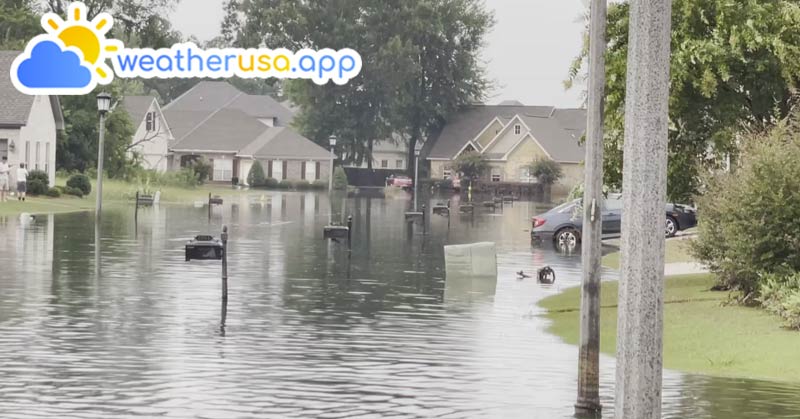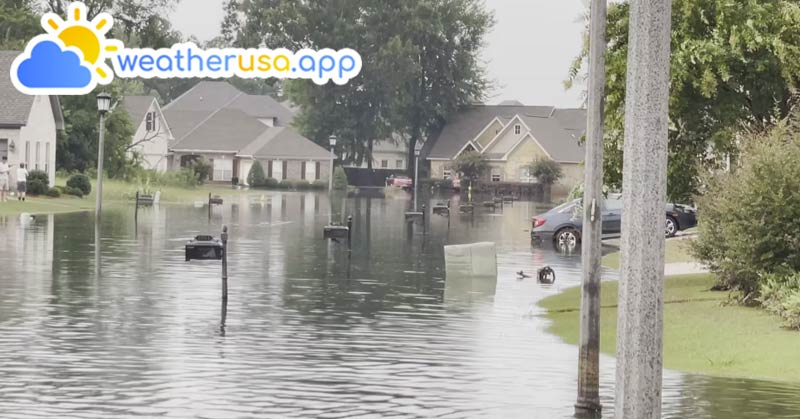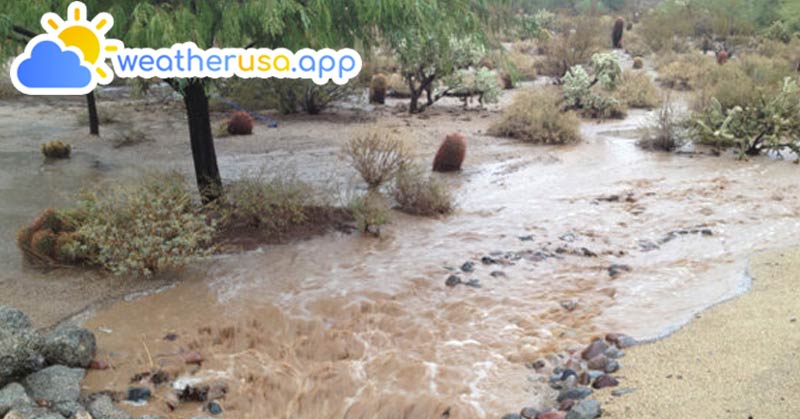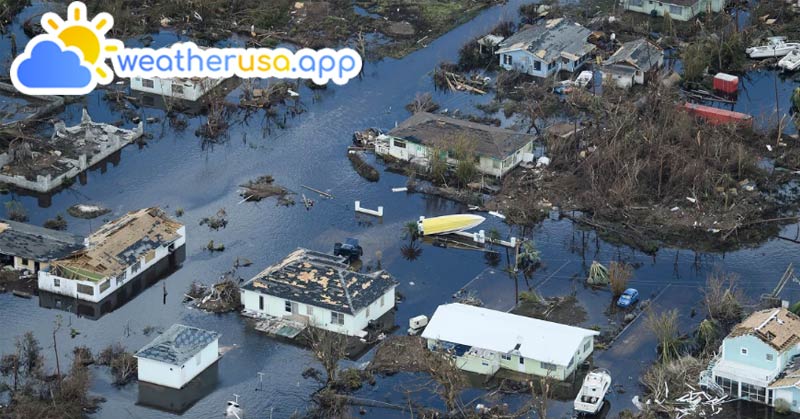
Arizona experiences record-breaking rainfall
Residents of Arizona have a saying: "We only get about 7 inches of rain a year, but you'll remember the night it comes."
In 2014, that memorable night was September 8. Later that day, the National Weather Service Forecast Office in Phoenix announced that the city rain gauge at Phoenix International Airport had received 3.29 inches of precipitation. This heavy rainfall broke the previous calendar-day record of 2.91 inches set on September 4, 1939. Several surrounding stations recorded totals exceeding 4 inches, and at least 2 topped 5 inches.
Weather Forecast For 35016 - Arab AL
The National Weather Service reported that the September 8 rainfall brought the annual precipitation since January 1 up to 5.51 inches. Although the total for that day was the highest ever recorded for a single calendar day, it was the second highest for 24-hour rainfall, according to The Arizona Republic. The record for 24-hour rainfall was set on July 2, 1911, with 4.98 inches. Nevertheless, Phoenix received more rain in a single day than it typically does in the entire month of September.

According to the National Weather Service, the September 2014 deluge in Phoenix was caused by a plume of moisture drifting inland from Hurricane Norbert off the coast of Baja California. Heavy rainfall, often the biggest hazard posed by hurricanes, was clearly demonstrated by this storm. Although Norbert was dissipating into a post-tropical cyclone on September 8, the National Hurricane Center warned that it could still bring "heavy rains and life-threatening flash flooding" to northern Mexico and the southwestern United States.
On September 9, communities from Phoenix to Tucson were recovering from the natural disaster. The storm had closed schools, left highways littered with abandoned vehicles, necessitated multiple water rescues, flooded around 200 homes, and resulted in two fatalities, according to news reports. An Arizona Republic headline described the storm as "a slow-moving disaster." Climate and Average Weather Year Round in 35019 - Baileyton AL
*After subsequent analysis, the National Weather Service revised the total rainfall to 3.30 inches over a 7-hour period.
Flooding in Arizona - A Recurring Problem
Floods occur in all 50 states, claiming numerous lives each year and costing upwards of six billion dollars annually. On average, most river systems flood every year or two when water leaves its channel and spreads onto the adjacent floodplain. There are two types of floods: regional floods, which last for weeks or months, and flash floods, which occur suddenly and last only hours. Both types are dangerous and can cause substantial damage to homes, property, and infrastructure.
See more: Zipcode in 35019 - Bessemer AL
Arizona Floods
Arizona experiences both regional and flash floods. While regional floods can affect large and small river systems, Arizona’s perennial rivers—such as the Colorado, Salt, Gila, and Verde Rivers—are most heavily impacted. The state's monsoon season, known for sudden, torrential, and localized rainfall, combined with a landscape carved by thousands of washes and gullies, creates ideal conditions for dangerous flash floods. Flooding on alluvial fans, where channels diverge downstream and broad areas outside of channels may be inundated during large floods, is a particular concern for floodplain management.

For a comprehensive review of the impact of regional flooding, see Kyle House’s article "Arizona Floods of Jan. & Feb. 1993," which recalls the severe statewide flooding linked to the 1993 El Niño. Flood damage that year was estimated at about 50 million dollars. US Highway 95, just east of Yuma, Arizona, was closed for nearly six months as the swollen Gila River slowly drained.
Flash floods rarely cause significant economic impact, but they can be deadly. In July 2017, a family of 10 was swept away and drowned by a flash flood in a tributary of the East Verde River near Payson, Arizona. On August 12, 1997, 11 tourists hiking in Antelope Canyon near Page, Arizona, were killed by a flash flood caused by a distant, unseen cloudburst. Flash floods commonly occur during Arizona’s monsoon season, typically driven by local, short-lived rainfall events.
See more: Climate in 35015 - Alton AL
If you encounter a flash flood: stay safe, stay out of the water. To discourage risky behavior, the Arizona Legislature enacted the “Stupid Motorist” law (statute 28-910), which penalizes drivers who ignore barricades and attempt to cross flooded streams.
Weather 01852 - Lowell MA

82°
clear sky
Feels like 82°06:26/18:53
85°F
/80°F
38%
1024 hPa
7 mi
4.61 mph
